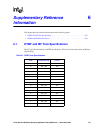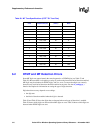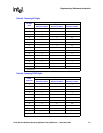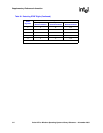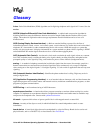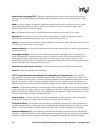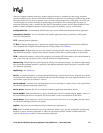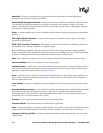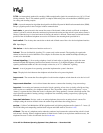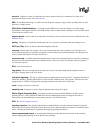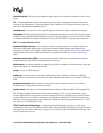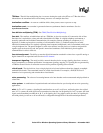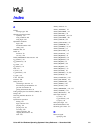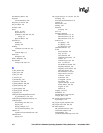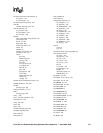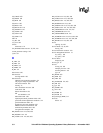
Voice API for Windows Operating Systems Library Reference — November 2003 547
G.726: An international standard for encoding 8 kHz sampled audio signals for transmission over 16, 24, 32 and
40 kbps channels. The G.726 standard specifies an adaptive differential pulse code modulation (ADPCM) system
for coding and decoding samples.
GSM: A speech compression algorithm developed for the Global System for Mobile telecommunication (GSM),
Europe’s popular protocol suite for digital cellular communication.
hook state: A general term for the current line status of the channel: either on-hook or off-hook. A telephone
station is said to be on-hook when the conductor loop between the station and the switch is open and no current is
flowing. When the loop is closed and current is flowing, the station is off-hook. These terms are derived from the
position of the old fashioned telephone set receiver in relation to the mounting hook provided for it.
hook switch: The circuitry that controls the on-hook and off-hook state of the voice device telephone interface.
I/O: Input-Output
idle device: A device that has no functions active on it.
in-band: The use of robbed-bit signaling (T-1 systems only) on the network. The signaling for a particular
channel or time slot is carried within the voice samples for that time slot, thus within the 64 kbps (kilobits per
second) voice bandwidth.
in-band signaling: (1) In an analog telephony circuit, in-band refers to signaling that occupies the same
transmission path and frequency band used to transmit voice tones. (2) In digital telephony, in-band means
signaling transmitted within an 8-bit voice sample or time slot, as in T-1 “robbed-bit” signaling.
kernel: A set of programs in an operating system that implement the system’s functions.
loop: The physical circuit between the telephone switch and the voice processing board.
loop current: The current that flows through the circuit from the telephone switch when the voice device is off-
hook.
loop current detection: A voice driver feature that returns a connect after detecting a loop current drop.
loop start: In an analog environment, an electrical circuit consisting of two wires (or leads) called tip and ring,
which are the two conductors of a telephone cable pair. The CO provides voltage (called “talk battery” or just
“battery”) to power the line. When the circuit is complete, this voltage produces a current called loop current. The
circuit provides a method of starting (seizing) a telephone line or trunk by sending a supervisory signal (going
off-hook) to the CO.
loop-start interfaces: Devices, such as an analog telephones, that receive an analog electric current. For
example, taking the receiver off-hook closes the current loop and initiates the calling process.
mu-law: (1) Pulse Code Modulation (PCM) algorithm used in digitizing telephone audio signals in T-1 areas. (2)
The PCM coding and companding standard used in Japan and North America. See also A-law.
off-hook: The state of a telephone station when the conductor loop between the station and the switch is closed
and current is flowing. When a telephone handset is lifted from its cradle (or an equivalent condition occurs), the
telephone line state is said to be off-hook. See also hook state.



